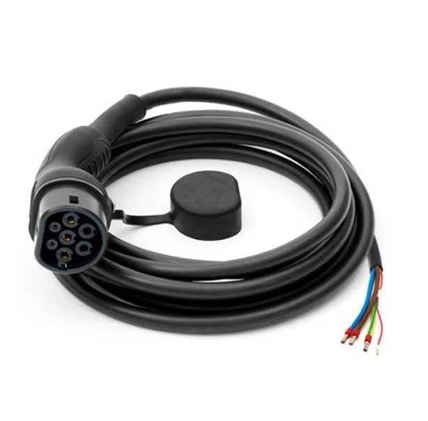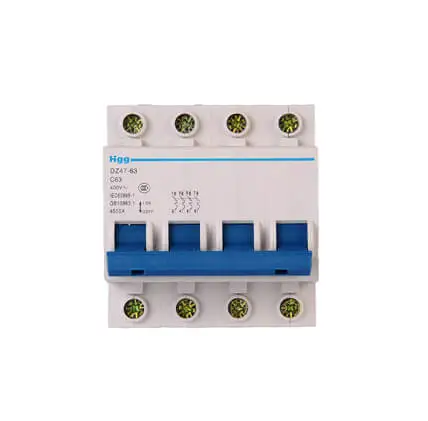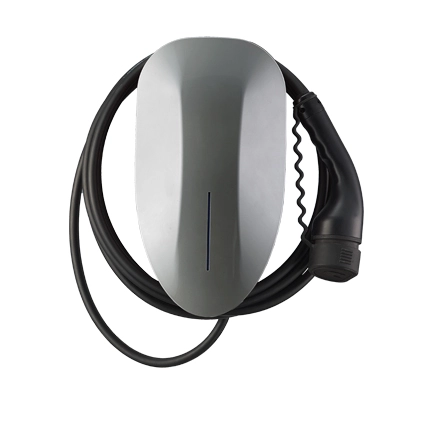Understanding Voltage Classifications
What is "Low Voltage"?
In electrical engineering, voltage classifications are more than just numbers; they dictate the design, safety, and application of electrical systems. Specifically, "Low Voltage" (LV) refers to voltages up to 1,000 volts. This is distinct from "Medium Voltage" (MV), which spans from 1,000 volts to 35,000 volts, and "High Voltage" (HV), which is anything above 35,000 volts. These classifications are not arbitrary; they're based on the insulation requirements, potential hazards, and the nature of applications each voltage range is suited for.
Components of Low Voltage Systems
Low voltage systems are intricate networks, comprising several key components. These include:
Circuit Breakers: Automatic devices designed to stop the flow of current in an electric circuit as a safety measure. They detect faults such as overloads or short circuits and interrupt current flow to prevent damage or fires.
Contactors: Electrically-controlled switches used for switching an electrical power circuit, similar to relays but with higher current ratings.
Relays: Electrically operated switches that allow circuits to be switched on or off depending on the conditions in another circuit.
Switches: Devices that can break an electrical circuit, interrupting the current or diverting it from one conductor to another.
The Significance of Low Voltage Components
Low voltage components are the workhorses of our electrical systems. They're responsible for the safe distribution and use of electricity in most residential and commercial settings. Their design ensures that electrical systems function efficiently, with minimal energy wastage, and with a high degree of safety. For instance, without the protective function of circuit breakers, common electrical faults could lead to fires or equipment damage.
Applications in Daily Life
Low voltage components are ubiquitous, silently operating in the background of our daily lives. They're present in the electrical panels of our homes, ensuring our appliances operate safely. In commercial settings, they manage the power distribution, ensuring equipment gets the right amount of electricity for efficient operation. Even in our cars, relays and switches play a crucial role in functions ranging from turning on headlights to starting the engine.
Ensuring Electrical Safety
The primary role of low voltage components is to ensure safety. They are designed to detect and respond to any abnormalities in an electrical system. For instance, if there's a sudden surge in electricity due to a fault, a circuit breaker would trip, cutting off the power supply to the affected area, preventing potential hazards like fires or equipment damage.
Basic Classification of Low Voltage Components
What is the fundamental difference between these classifications? Each category of components has its specific function and application. For instance, protective devices are designed to prevent overcurrent or short circuits, while switching devices are meant to control and interrupt the flow of current. These classifications allow us to understand and select components based on their function and use.
Why are low voltage components divided into these specific categories? Classifying components helps in designing and maintaining electrical systems more effectively. By understanding the function of each component, engineers and technicians can ensure the correct selection and installation of the appropriate components, enhancing the safety and efficiency of the system.
Protective Devices
How do protective devices work? Protective devices, like DC mini circuit breaker, operate similarly to a tap in your home. When the current exceeds safe limits (just as water flowing too fast might burst a pipe), the protective device "trips" or "breaks", interrupting the flow to prevent further damage.
How do they protect electrical systems from damage? When the current surpasses the rated value of the component, protective devices automatically disconnect the circuit. This prevents risks like wire overheating, equipment damage, or potential fires.
When should I use protective devices? Protective devices should be used in any electrical system, be it homes, offices, or factories, to guard against overcurrent or short circuits.
Are there common faults or issues related to protective devices? Common issues include the device tripping frequently, inability to reset, or physical damage. In such cases, the device should be replaced or repaired promptly.
Switching Devices
What is the primary function of switching devices? The main role of switching devices is to control and interrupt the flow of current. They allow users to manually or automatically turn circuits on or off.
How do they control or interrupt the current? Switching devices control the flow of current through physical mechanisms like levers or buttons, opening or closing the circuit.
When should I use switching devices? Switching devices should be used when there's a need for manual control of power or in certain automated systems where power control is based on specific conditions.
How are switching devices different from protective devices? While both can disconnect a circuit, switching devices are primarily for manual control, whereas protective devices automatically trip when they detect anomalies in the current.
Connection Devices
What is the primary role of connection devices? Connection devices, such as sockets and plugs, provide a safe means to connect electrical equipment to the power source.
How do they ensure the safety and stability of electrical connections? Connection devices are rigorously designed and tested to ensure they can transmit current safely and stably without causing electrical faults.
Are there specific connection devices suitable for particular applications or environments? Yes, some connection devices are designed specifically for high humidity or high-temperature environments, while others are suitable for domestic or office settings.
Measurement and Monitoring Devices
Why do we need to measure and monitor electrical systems? Measurement and monitoring ensure the safe and efficient operation of electrical systems. The data provided by these devices can help identify potential issues and take action before they escalate.
How does the data provided by these devices help improve the efficiency and safety of systems? For instance, current monitoring devices can display the real-time power consumption of electrical equipment, helping users identify and reduce energy wastage. Simultaneously, overload alerts can warn users of potential current issues, preventing equipment damage or fires.
How do you correctly read and interpret the data provided by these devices? Users should familiarize themselves with the device's operating manual and regularly check the device to ensure it's functioning correctly. When interpreting data, consider the overall performance of the system and environmental factors like temperature and humidity.
Brief introduction of low voltage components
Protective Devices: Analogous to a dam or spillway that controls the flow of water to prevent flooding.
Circuit Breakers: Like a dam gate, they automatically stop the flow of electricity (water) when there's too much current (water flow).
Fuses: Act like a weak point in a dam. If the water flow becomes too strong, this weak point breaks first, stopping the flow.
Surge Protectors: Similar to overflow channels in dams, they divert excess voltage (water) away from sensitive equipment.
Residual Current Devices (RCD): Think of them as sensors in a dam that detect any water leakages and immediately shut off the flow.
Voltage Limiters: Like a dam's height, they ensure voltage (water level) doesn't exceed a certain limit.
2. Switching Devices: Analogous to taps or valves that control the flow of water.
Relays: Like a remote-controlled water valve, they allow a small current (small water flow) to control a larger one.
Switches: Manual taps that let you control the flow of electricity (water) by turning them on or off.
Contactors: Bigger versions of relays, like large valves controlling the flow in major water pipelines.
Transistors: Electronic switches that can be thought of as very precise water valves, controlling tiny flows.
Solid-State Relays (SSR): Electronic relays with no moving parts, akin to touch-controlled water faucets.
3. Connection Devices: Analogous to pipes, joints, and connectors in a water system.
Terminals: Like water hose connectors, they ensure a secure connection between wires.
Connectors: Think of them as the joints in a water pipeline, connecting different sections.
Sockets: Similar to water outlets in homes, allowing appliances to tap into the electrical supply.
Plugs: The counterpart to sockets, like a hose's end connecting to a water outlet.
Junction Boxes: Like a water distribution hub, where multiple pipes converge.
4. Measurement and Monitoring Devices: Analogous to meters and sensors in a water supply system.
Voltmeters: Measure voltage (water pressure) in a circuit.
Ammeters: Measure current (water flow rate) in a circuit.
Ohmmeters: Measure resistance (akin to measuring how wide a water pipe is).
Multimeters: Multi-purpose devices, like a water quality monitoring station checking various parameters.
Oscilloscopes: Visualize electrical signals, similar to watching the flow of water in a transparent pipe.
Summary of Low voltage Electric: A Water Analogy
Finally, I will use water again as an analogy to describe low voltage electric system vividly.
Electrical systems have different voltage classifications, much like water systems vary in pressure. "Low Voltage" is akin to a gentle stream, while "Medium" and "High Voltage" resemble powerful rivers and waterfalls.
In the realm of low voltage:
Protestive devices act as dam gates, stopping electrical flow during faults, similar to how dams control water overflow.
Switching devices are our everyday taps, controlling when and how electricity flows.
Connection Devices, like pipes in a water system, ensure steady and secure electrical connections.
Measurement and Monitoring Devices are the meters monitoring water usage, keeping a check on electrical system health.
In short, low voltage components function similarly to elements in our water systems, each with a distinct role ensuring safety and efficiency.
Now, if you have any questions about electrical components or demand for low voltage components, feel free to contact us at ye@voltageace.com.





